[Previous] [Next]
Managing Power Transitions
Performing power management tasks correctly requires very accurate coding, and there are
many complicating factors. For example, your device might have the ability to wake up the
system from a sleeping state. Deciding whether to succeed or fail a query, and deciding which
device power state corresponds to a given new system power state, depends on whether your
wake-up feature is currently armed. You may have powered down your own device because of
inactivity, and you need to provide for restoring power when a substantive IRP comes along.
Maybe your device is an "inrush" device that needs a large spike of current to power
on, in which case the Power Manager treats you specially. And so on.
When I thought about solving all the problems of handling query-power and set-power
operations in a traditional way—that is, with normal-looking dispatch and completion
routines—I was daunted by the sheer number of different subroutines that would be required
and that would end up doing fairly similar things. I therefore decided to build my power
support around a finite state machine that could easily deal with the asynchronous nature of
the activities.
I'll explain this finite state machine as it appears in GENERIC.SYS, which is a support
driver that most of the code samples on the companion disc use. Appendix B, "Using GENERIC.SYS," explains the client interface to GENERIC.SYS in complete detail. GENERIC.SYS
amounts to a kernel-mode DLL containing helper functions for WDM drivers. You could think of it
as a generic class driver with broad applicability. Client drivers, including most of my own
sample drivers, delegate handling of power IRPs to GENERIC.SYS by calling
GenericDispatchPower. GENERIC.SYS also implements the DEVQUEUE object I discussed in
Chapter 6, "Plug and Play."
Overview of the Finite State Machine
I wrote a function named HandlePowerEvent to implement the finite state machine that
manages power IRPs. I call this function with two arguments:
NTSTATUS HandlePowerEvent(PPOWCONTEXT ctx, enum POWEVENT event);
|
The first argument is a context structure that contains a state variable, among other
things:
typedef struct _POWCONTEXT {
LONG id;
LONG eventcount;
PGENERIC_EXTENSION pdx;
PIRP irp;
enum POWSTATE state;
NTSTATUS status;
PKEVENT pev;
DEVICE_POWER_STATE devstate;
UCHAR MinorFunction;
BOOLEAN UnstallQueue;
} POWCONTEXT, *PPOWCONTEXT;
|
The id and eventcount fields are for debugging. If you compile POWER.CPP in
the GENERIC project with the preprocessor macro VERBOSETRACE defined as a nonzero value, the
POWTRACE macro will produce volumes of trace messages. I used this feature to debug the finite
state machine. The prebuilt version of GENERIC.SYS on the companion disc was built without
VERBOSETRACE to cut down on the sheer number of trace messages you'd be confronted with
when you began to try out my samples.
The pdx member points to GENERIC's portion of the device extension for a given
device. There are just a couple of members in the device extension that are important for power
management, and I'll mention them later in "Initial Handling for a New IRP." The
irp member points to the power IRP that the finite state machine is currently working
on; state is the state variable for the machine. The status member is the ending
status of an IRP. In some situations, we want to wait while HandlePowerEvent originates and
completes a device power IRP; we use the event pointed to by pev to await completion in
those situations. The devstate member holds the device power state we want to use in a
device IRP, and MinorFunction holds the minor function code (IRP_MN_QUERY_POWER or
IRP_MN_SET_POWER) we want to use in that IRP. Finally, UnstallQueue indicates whether we
want the state machine to unstall the substantive IRP queue when it finishes handling the
current power IRP.
The second argument to HandlePowerEvent is an event code that indicates why we're
calling the function. There are just these few event codes:
- NewIrp indicates that we are submitting a new power IRP to the finite state machine
for processing. The context structure's irp member points to the IRP in
question.
- MainIrpComplete indicates that an IRP is complete.
- AsyncNotify indicates that some other asynchronous activity has occurred.
HandlePowerEvent uses the value of the state variable and the event code to determine an
action to take. See Table 8-3. (In the table, by the way, an empty cell denotes an impossible
situation that leads to an ASSERT failure in the checked build of GENERIC.SYS.) An action
corresponds to a series of program steps that advance the power IRP along its processing
path.
Table 8-3. Table giving initial action for each event and state.
| State |
|
Event |
|
|
NewIrp |
MainIrpComplete |
AsyncNotify |
| InitialState |
TriageNewIrp |
|
|
| SysPowerUpPending |
|
SysPowerUpComplete |
|
| SubPowerUpPending |
|
|
SubPowerUpComplete |
| SubPowerDownPending |
|
|
SubPowerDownComplete |
| SysPowerDownPending |
|
SysPowerDownComplete |
|
| DevPowerUpPending |
|
DevPowerUpComplete |
|
| DevPowerDownPending |
|
CompleteMainIrp |
|
| ContextSavePending |
|
|
ContextSaveComplete |
| ContextRestorePending |
|
|
ContextRestoreComplete |
| DevQueryUpPending |
|
DevQueryUpComplete |
|
| DevQueryDownPending |
|
DevQueryDownComplete |
|
| QueueStallPending |
|
|
QueueStallComplete |
| FinalState |
|
|
|
Since many of the events require multiple actions in some situations, I coded
HandlePowerEvent in what may seem at first like a peculiar way, as follows:
NTSTATUS HandlePowerEvent(...)
{
NTSTATUS status;
POWACTION action = ...;
while (TRUE)
{
switch (action)
{
case <someaction>:
action = <someotheraction>;
continue;
case <anotheraction>:
break;
}
break;
}
return status;
}
|
That is, the function amounts to a switch on the action code imbedded within
an infinite loop. An action case that performs a continue statement repeats the loop;
this is how I string together a series of actions during one call to the function. An action
case that performs a break from the switch reaches another break statement
that exits from the loop, whereupon the function returns.
I adopted this coding style for the state machine because I really took to heart the
structured programming precepts I learned in my youth. I wanted there to be just one return
statement in this whole function to make it easier to prove that the function worked correctly.
To aid in the proof, I developed a couple of rules for myself that I could test either by
inspection or with ASSERT statements at the end of the function. Here are the rules:
- Every code path eventually leads to a break statement and, hence, to a
return from the function. Somewhere along the path, someone has to change the status
variable (I initialize it to -1 and then test to be sure it got changed) and the state
variable (I test to be sure it got changed).
- Any continue statement should be preceded by a change in the action
variable.
- Any case that might generate a recursive call to HandlePowerEvent—for example, by
calling PoCallDriver, which might cause a completion event to be signalled before it
returns—must immediately break from the loop without touching the context structure
or the IRP.
Initial Handling for a New IRP
When we receive a new query-power or set-power IRP, we create a context structure to drive
the finite state machine and call HandlePowerEvent:
1  2
2 
|
NTSTATUS GenericDispatchPower(PGENERIC_EXTENSION pdx, PIRP Irp)
{
NTSTATUS status = IoAcquireRemoveLock(pdx->RemoveLock, Irp);
if (!NT_SUCCESS(status))
return CompleteRequest(Irp, status);
PIO_STACK_LOCATION stack = IoGetCurrentIrpStackLocation(Irp);
ULONG fcn = stack->MinorFunction;
if (fcn == IRP_MN_SET_POWER || fcn == IRP_MN_QUERY_POWER)
{
PPOWCONTEXT ctx = (PPOWCONTEXT) ExAllocatePool(NonPagedPool,
sizeof(POWCONTEXT));
RtlZeroMemory(ctx, sizeof(POWCONTEXT));
ctx->pdx = pdx;
ctx->irp = Irp;
status = HandlePowerEvent(ctx, NewIrp);
}
IoReleaseRemoveLock(pdx->RemoveLock, Irp);
return status;
}
|
- The client driver provides a remove lock that both it and GENERIC use to guard
against premature removal of the device object. The actual code in GENERIC is a little more
complicated than I'm showing you here, in that the remove lock isn't required. The
actual code therefore tests the RemoveLock pointer for NULL before using it. There are
other unimportant respects, including error checking, in which GENERIC differs from the
simplified version I'm showing throughout this chapter.
- For set and query operations, we allocate nonpaged memory for the context
structure and initialize it. The state variable gets initialized to InitialState,
which is numerically equal to 0, by the call to RtlZeroMemory.
The initial state of the finite state machine is InitialState. When we call HandlePowerEvent
for the NewIrp event, the first action taken will be the following, which I named
TriageNewIrp:
1  2
2  3
3  4
4  5
5  6
6  7
7 
|
case TriageNewIrp:
{
status = STATUS_PENDING;
IoMarkIrpPending(Irp);
IoAcquireRemoveLock(pdx->RemoveLock, Irp);
if (stack->Parameters.Power.Type == SystemPowerState)
{ // system IRP
if (stack->Parameters.Power.State.SystemState < pdx->syspower)
{
action = ForwardMainIrp;
ctx->state = SysPowerUpPending;
}
else
{
action = SelectDState;
ctx->state = SubPowerDownPending;
}
} // system IRP
else
{ // device IRP
ctx->state = QueueStallPending;
if (!pdx->StalledForPower)
{
ctx->UnstallQueue = TRUE;
pdx->StalledForPower = TRUE;
NTSTATUS qstatus = StallRequestsAndNotify(pdx->dqReadWrite,
GenericSaveRestoreComplete, ctx);
if (qstatus == STATUS_PENDING)
break;
}
action = QueueStallComplete;
} // device IRP
continue;
}
|
- We always pend the power IRPs that come to us. In nearly every case, we need to
delay completing the IRP until after some asynchronous activity occurs.
- We acquire the remove lock an extra time beyond the acquisition that occurs in
the dispatch routine. We'll release this instance of the lock when we finally complete the
IRP.
- If the power state in the IRP is numerically less than the syspower value
we carry around in the device extension, the IRP relates to a higher system power state.
- This statement illustrates how HandlePowerEvent can perform more than one
action during a single invocation. Later on we'll execute a continue statement that
repeats the infinite loop. The action value will be different, however, which will cause
us to execute a different piece of code.
- This statement illustrates how action cases can alter the state of the finite
state machine. To simplify the conditional compilation I used for debugging print statements,
the actual code in GENERIC uses a macro named SETSTATE to perform this assignment, by the
way.
- We're about to call a function (StallRequestsAndNotify ) that might
cause recursion into this function. We're not allowed to touch the context structure
afterwards, so we set this flag now. The flag means that CompleteMainIrp should call
RestartRequests to unstall the queue.
- This statement illustrates how an action case can cause HandlePowerEvent
to return. This break statement exits from the switch on action.
Immediately after the switch statement is another break, which exits from the
while loop in which the switch is embedded.
Basically, TriageNewIrp is distinguishing between system power IRPs (that is, IRPs whose
Type is SystemPowerState ) that increase the power level, system power IRPs that
leave the power level alone or reduce it, and device power IRPs (that is, IRPs whose
Type is DevicePowerState ), regardless of whether they raise or lower the power
level. The state machine doesn't distinguish at this stage between QUERY_POWER and
SET_POWER requests, so they end up being treated very similarly up to a point.
For us to know whether power is rising or falling, our device extension needs two variables
for keeping track of system power and device power states:
typedef struct _GENERIC_EXTENSION {
...
DEVICE_POWER_STATE devpower; // current dev power state
SYSTEM_POWER_STATE syspower; // current sys power state
} GENERIC_EXTENSION, *PGENERIC_EXTENSION;
|
We initialize these values to PowerDeviceD0 and PowerSystemWorking,
respectively, when the client driver first registers with GENERIC.SYS.
You can guess from context that the device extension also has a BOOLEAN member named
StalledForPower. This flag, when set, indicates that the substantive IRP queue is presently
stalled for purposes of power management. Incidentally, you'll notice (if you've got
the right sort of nasty and suspicious mind to be doing device driver programming, that is)
that I'm not explicitly synchronizing access to the power state fields or this flag. No
additional synchronization is required beyond the serialization that the Power Manager already
imposes.
I'll discuss the three initial categories of IRPs separately now.
System Power IRPs That Increase Power
If a system power IRP implies an increase in the system power level, you'll forward it
immediately to the next lower driver. In your completion routine for the system power IRP,
you'll request the corresponding device power IRP and return STATUS_MORE_PROCESSING_REQUIRED
to temporarily halt the completion process. In a completion routine
for the device power IRP, you'll finish the completion processing for the system power IRP.
Figure 8-5 diagrams the flow of the IRP through all of the drivers. Figure 8-6 is a state
diagram that shows how our finite state machine handles the IRP.
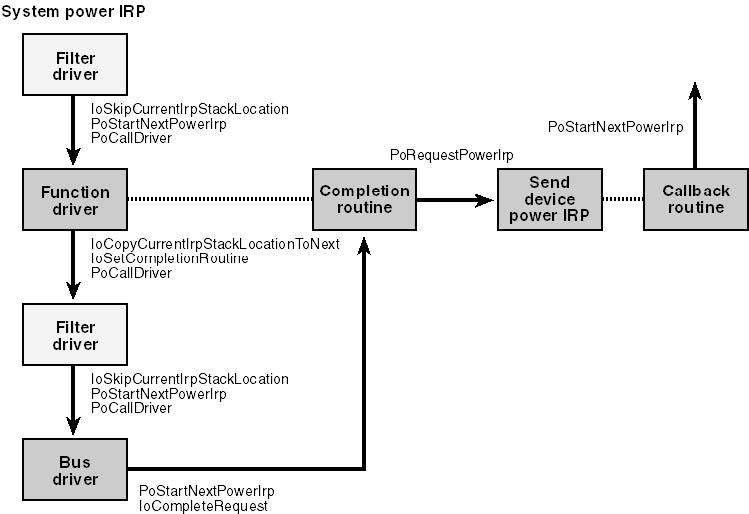
Figure 8-5. IRP flow when increasing system power.
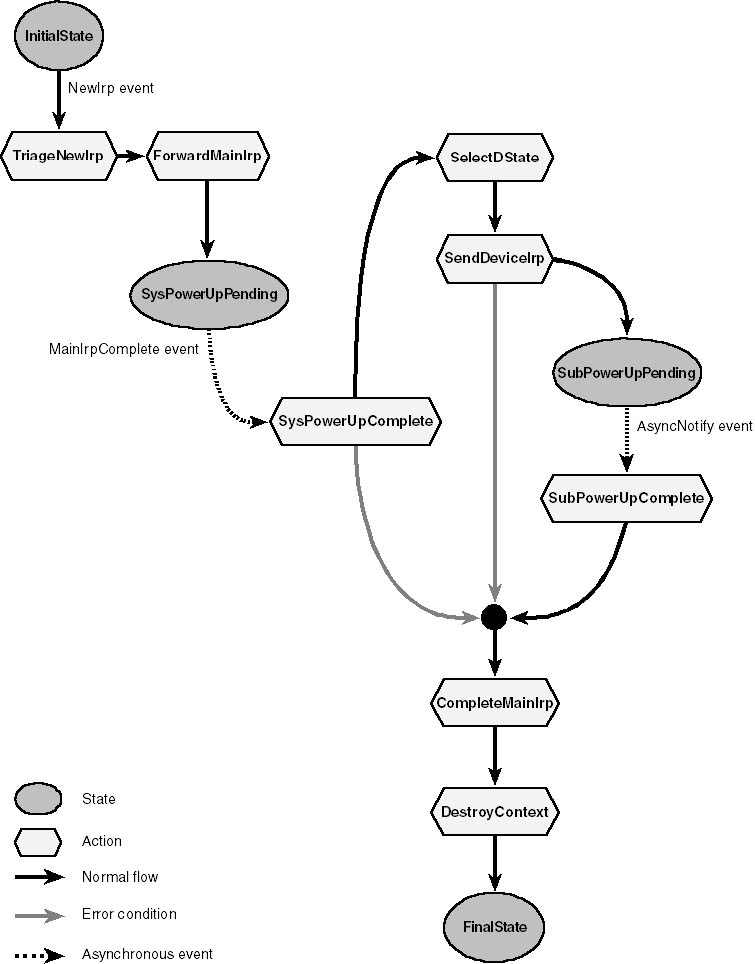
Figure 8-6. State transitions when increasing system power.
In terms of how the code works, I showed you earlier that TriageNewIrp puts the machine into
the SysPowerUpPending state and requests the ForwardMainIrp action, which is as
follows:
case ForwardMainIrp:
{
IoCopyCurrentIrpStackLocationToNext(Irp);
IoSetCompletionRoutine(Irp, (PIO_COMPLETION_ROUTINE)
MainCompletionRoutine, (PVOID) ctx, TRUE, TRUE, TRUE);
PoCallDriver(pdx->LowerDeviceObject, Irp);
break;
}
|
HandlePowerEvent will now return STATUS_PENDING, as mandated by the code we already saw in
TriageNewIrp. This return value percolates back out through GenericDispatchPower and,
presumably, the client driver's IRP_MJ_POWER dispatch function.
Our next contact with this IRP is when the bus driver completes it. Our own
MainCompletionRoutine gets control as part of the completion process, saves the IRP's
ending status in the context structure's status field, and invokes the finite state
machine:
NTSTATUS MainCompletionRoutine(PDEVICE_OBJECT junk, PIRP Irp,
PPOWCONTEXT ctx)
{
ctx->status = Irp->IoStatus.Status;
return HandlePowerEvent(ctx, MainIrpComplete);
}
|
Our initial action will be SysPowerUpComplete:
1  2
2  3
3 
|
case SysPowerUpComplete:
{
if (!NT_SUCCESS(ctx->status))
action = CompleteMainIrp;
else
{
if (stack->MinorFunction == IRP_MN_SET_POWER)
pdx->syspower = stack->Parameters.Power.State.SystemState;
action = SelectDState;
ctx->state = SubPowerUpPending;
status = STATUS_MORE_PROCESSING_REQUIRED;
}
continue;
}
|
- If the IRP failed in the lower levels of the driver hierarchy, we're going to
let it complete without doing any more work on this power event. I'll explain in the next
section, "Dealing with Failure," what CompleteMainIrp does.
- This is where we record the new system power state. We use the syspower
value when we check to see whether a new system IRP is raising or lowering power.
- We've been called from MainCompletionRoutine and now want to interrupt
completion of the system IRP while we process the device IRP we're about to originate.
Hence, we'll cause MainCompletionRoutine to return STATUS_MORE_PROCESSING_REQUIRED.
Dealing with Failure
If the IRP failed, you can see that we'll do the CompleteMainIrp action next:
1  2
2  3
3  4
4  5
5 
|
case CompleteMainIrp:
{
PoStartNextPowerIrp(Irp);
if (event == MainIrpComplete)
status = ctx->status;
else
{
Irp->IoStatus.Status = ctx->status;
IoCompleteRequest(Irp, IO_NO_INCREMENT);
}
IoReleaseRemoveLock(pdx->RemoveLock, Irp);
if (ctx->UnstallQueue)
{
pdx->StalledForPower = FALSE;
RestartRequests(pdx->dqReadWrite, pdx->DeviceObject);
}
action = DestroyContext;
continue;
}
|
- Here's the call to PoStartNextPowerIrp that we must make for each
power IRP while we still own it.
- If we were entered to handle a MainIrpComplete event, our caller must have
been MainCompletionRoutine, and the first action routine will have set status
equal to STATUS_MORE_PROCESSING_REQUIRED to short-circuit the completion process. Since
we've decided we want to complete this IRP after all—that's why we're at
CompleteMainIrp—the right thing to do is to return a different status code and allow
the completion process to take its normal course.
- If we were entered for any other event, we need to explicitly complete the
IRP.
- This IoReleaseRemoveLock call balances the call to
IoAcquireRemoveLock that we did during TriageNewIrp.
- I'll explain what this block of code is all about when I talk about device
IRPs later in this chapter.
When handling a system power IRP that increases power, the machine enters CompleteMainIrp
after a MainIrpComplete event. CompleteMainIrp will therefore arrange to return the error
status we originally fetched (inside MainCompletionRoutine) from the IRP. That will permit the
completion process to continue. There are other code paths we haven't studied yet in which
CompleteMainIrp calls IoCompleteRequest instead. CompleteMainIrp finishes by requesting
yet another action:
1  2
2 
|
case DestroyContext:
{
if (ctx->pev)
KeSetEvent(ctx->pev, IO_NO_INCREMENT, FALSE);
else
ExFreePool(ctx);
break;
}
|
- This branch is taken when SendDeviceSetPower calls the state machine
engine to create and wait for a device IRP.
- This branch is taken when GenericDispatchPower calls the state machine
engine to process an IRP.
DestroyContext is, of course, the last action the finite state machine ever
performs.
Mapping the System State to a Device State
The other possible path out of SysPowerUpComplete generates a device power IRP with a power
state that corresponds to the system power state. We perform the mapping of system to device
states in the SelectDState action:
case SelectDState:
{
SYSTEM_POWER_STATE sysstate =
stack->Parameters.Power.State.SystemState;
if (sysstate == PowerSystemWorking)
ctx->devstate = PowerDeviceD0;
else
{
DEVICE_POWER_STATE maxstate =
pdx->devcaps.DeviceState[sysstate];
DEVICE_POWER_STATE minstate = pdx->WakeupEnabled ?
pdx->devcaps.DeviceWake : PowerDeviceD3;
ctx->devstate = minstate > maxstate ? minstate : maxsstate;
}
ctx->MinorFunction = stack->MinorFunction;
action = SendDeviceIrp;
continue;
}
|
By the way, the Power Manager never transitions directly from one low system power state to
another: it always moves via PowerSystemWorking. That's why I coded SelectDState to choose
one mapping for PowerSystemWorking and a different mapping for all other system power
states.
In general, we always want to put our device into the lowest power state that's
consistent with current device activity, with our own wake-up feature (if any), with device
capabilities, and with the impending state of the system. These factors can interplay in a
relatively complex way. To explain them fully, I need to digress briefly and talk about a Plug
and Play IRP that I avoided discussing in Chapter 6: IRP_MN_QUERY_CAPABILITIES.
The PnP Manager sends a capabilities query shortly after starting your device and perhaps at
other times. The parameter for the request is a DEVICE_CAPABILITIES structure that contains
several fields relevant to power management. Since this is the only time in this book I'm
going to discuss this structure, I'm showing you the entire declaration:
typedef struct _DEVICE_CAPABILITIES {
USHORT Size;
USHORT Version;
ULONG DeviceD1:1;
ULONG DeviceD2:1;
ULONG LockSupported:1;
ULONG EjectSupported:1;
ULONG Removable:1;
ULONG DockDevice:1;
ULONG UniqueID:1;
ULONG SilentInstall:1;
ULONG RawDeviceOK:1;
ULONG SurpriseRemovalOK:1;
ULONG WakeFromD0:1;
ULONG WakeFromD1:1;
ULONG WakeFromD2:1;
ULONG WakeFromD3:1;
ULONG HardwareDisabled:1;
ULONG NonDynamic:1;
ULONG Reserved:16;
ULONG Address;
ULONG UINumber;
DEVICE_POWER_STATE DeviceState[PowerSystemMaximum];
SYSTEM_POWER_STATE SystemWake;
DEVICE_POWER_STATE DeviceWake;
ULONG D1Latency;
ULONG D2Latency;
ULONG D3Latency;
} DEVICE_CAPABILITIES, *PDEVICE_CAPABILITIES;
|
Table 8-4 describes the fields in this structure that relate to power management.
Table 8-4. Power-management fields in DEVICE_CAPABILITIES structure.
| Field |
Description |
| DeviceState |
Array of highest device states possible for each system state |
| SystemWake |
Lowest system power state from which the device can generate a wake-up signal for the system—PowerSystemUnspecified indicates that device
can't wake up the system |
| DeviceWake |
Lowest power state from which the device can generate a wake-up
signal—PowerDeviceUnspecified indicates that device can't generate a wake-up
signal |
| D1Latency |
Approximate worst-case time (in 100-microsecond units) required for device to switch
from D1 to D0 states |
| D2Latency |
Approximate worst-case time (in 100-microsecond units) required for device to
switch from D2 to D0 states |
| D3Latency |
Approximate worst-case time (in 100-microsecond units) required for device to
switch from D3 to D0 states |
| WakeFromD0 |
Flag indicating whether device's system wake-up feature is operative when the
device is in the indicated state |
| WakeFromD1 |
Same as above |
| WakeFromD2 |
Same as above |
| WakeFromD3 |
Same as above |
You normally handle the query capabilities IRP synchronously by passing it down and waiting
for the lower layers to complete it. After the pass-down, you'll make any desired changes
to the capabilities recorded by the bus driver. Your subdispatch routine would look like this
one:
1  2
2  3
3 
|
NTSTATUS HandleQueryCapabilities(IN PDEVICE_OBJECT fdo,
IN PIRP Irp)
{
PIO_STACK_LOCATION stack = IoGetCurrentIrpStackLocation(Irp);
PDEVICE_EXTENSION pdx = (PDEVICE_EXTENSION) fdo->DeviceExtension;
PDEVICE_CAPABILITIES pdc = stack->
Parameters.DeviceCapabilities.Capabilities;
if (pdc->Version < 1)
return DefaultPnpHandler(fdo, Irp);
NTSTATUS status = ForwardAndWait(fdo, Irp);
if (NT_SUCCESS(status))
{
stack = IoGetCurrentIrpStackLocation(Irp);
pdc = stack->Parameters.DeviceCapabilities.Capabilities;
<stuff>
pdx->devcaps = *pdc;
}
return CompleteRequest(Irp, status);
}
|
- The device capabilities structure has a version number member, which is currently
always equal to 1. The structure is designed to always be upward compatible, so you'll be
able to work with the version defined in the DDK that you build your driver with and
with any later incarnation of the structure. If, however, you're confronted with a
structure that's older than you're able to work with, you should just ignore this IRP
by passing it along.
- Here's where you can override any capabilities that were set by the bus
driver.
- It's a good idea to make a copy of the capabilities structure. I already
described how you'll use the DeviceState map when you receive a system power IRP.
You might have occasion to consult other fields in the structure, too.
Don't bother altering the characteristics structure before you pass this IRP down: the
bus driver will completely reinitialize it. When you regain control, you can modify
SystemWake and DeviceWake to specify a higher power state than the bus driver
thought was appropriate. You can't specify a lower power state for the wake-up fields, and
you can't override the bus driver's decision that your device is incapable of waking
the system. If your device is ACPI-compliant, the ACPI filter will set the
LockSupported, EjectSupported, and Removable flags automatically based on the
ACPI Source Language (ASL) description of the device—you won't need to worry about
these capabilities.
You might want to set the SurpriseRemovalOK flag at point "2" in the
capabilities handler. Setting the flag suppresses the dialog box that Windows 2000 normally
presents when it detects the sudden and unexpected removal of a device. It's normally okay
for the end user to remove a universal serial bus (USB) or 1394 device without first telling
the system, and the function driver should set this flag to avoid annoying the user.
To return to our discussion of SelectDState, suppose we're dealing with a set-power
request that will take the computer from Working to Sleeping1; we'll therefore execute the
second branch of the if statement in SelectDState. Let's suppose that the bus driver
knows that our device can be in any of the states D0, D1, D2, or D3 when the system is in
Sleeping1. When it answered the PnP capabilities query it would therefore have filled in
DeviceState [PowerSystemSleeping1] in the device capabilities structure with the value
PowerDeviceD0 because D0 is the highest power state our device can occupy for this
system state. We'll initially record PowerDeviceD0, then, as the value of
maxstate.
Our device might also have a wake-up feature. I'll say more about wake-up later on. If
so, the bus driver will have set the DeviceWake member of the capabilities structure equal to
the lowest power state from which wake-up can occur. Let's suppose that value is
PowerDeviceD1. If our wake-up feature happens to be enabled right now, we'll set
minstate to PowerDeviceD1.
If we don't have a wake-up feature, however, or if we have one and it's not
currently enabled, we're free to choose any device power state lower than the
maxstate value we derived from the device capabilities structure. We could blindly choose
D3, but that wouldn't be right for every type of device because generally speaking it takes
longer to resume from D3 to D0 than from D2 or D1. The choice you make in this case therefore
depends on factors for which I can't give you cut-and-dried guidance. If your device is
capable of the D2 state, for example, you might decide to enter D2 for any of the system
sleeping states and reserve D3 for the hibernate and shutdown states.
It seems reasonable to leave your device in a low power state when the system resumes from a
sleeping state. The DDK suggests you do this, and so does good sense. There are two situations
in which you would need to restore your device to D0 when the system goes to Working. The first
situation is when your device has the INRUSH characteristic. In this case, the Power Manager
won't send power IRPs to any other INRUSH device until you've powered on your device.
The second situation is when you've got substantive IRPs queued and waiting to run once
power is back. Notwithstanding what a good idea it seems to be to just leave your device in a
low power state, you'll notice that the code fragment I just showed you for SelectDState
unconditionally picks the D0 state. In my testing, Windows 2000 seemed to hang coming out of
standby if I didn't do that. Maybe there's a mistake in my code or in the operating
system. Stay tuned to my errata page for more information about this.
Requesting a Device Power IRP
In Chapter 5, "The I/O Request Packet," I discussed support functions such as
IoAllocateIrp that you can use to build IRPs. You don't use those functions when you
want to create power IRPs, though. (Actually, you would use one of those functions for
an IRP_MN_POWER_SEQUENCE request, but not for the other IRP_MJ_POWER requests.) Instead, you
use PoRequestPowerIrp, as shown here in the code for the SendDeviceIrp action
we'd perform after SelectDState:
1  2
2  3
3  4
4 
|
case SendDeviceIrp:
{
if (win98 && ctx->devstate == pdx->devpower)
{
ctx->status = STATUS_SUCCESS;
action = actiontable[ctx->state][AsyncNotify];
continue;
}
POWER_STATE powstate;
powstate.DeviceState = ctx->devstate;
NTSTATUS postatus = PoRequestPowerIrp(pdx->Pdo,
ctx->MinorFunction, powstate, (PREQUEST_POWER_COMPLETE)
PoCompletionRoutine, ctx, NULL);
if (NT_SUCCESS(postatus))
break;
action = CompleteMainIrp;
ctx->status = postatus;
continue;
}
|
- Refer to "Windows 98 Compatibility Notes" at the end of this chapter
for an explanation of what this section of code is all about.
- The first argument to PoRequestPowerIrp is the address of the physical
device object (PDO) for our device. Note that the IRP we're requesting will actually get
sent to the topmost filter device object (FiDO) anyway. The second argument is the minor
function code for the IRP we want to send. This will either be IRP_MN_QUERY_POWER or
IRP_MN_SET_POWER in our case. The third argument is a POWER_STATE that should contain a device
power state value when we're requesting a query or set operation. The fourth and fifth
arguments are, respectively, the address of a callback routine for when the IRP finishes and a
context parameter for that function. The last argument is an optional address of a PIRP
variable to receive the address of the IRP that PoRequestPowerIrp creates.
- PoRequestPowerIrp normally returns STATUS_PENDING after creating and
launching the power IRP you've requested. This, and any success code, in fact, mean that
our callback function will eventually be called. It will generate another call to
HandlePowerEvent, so we're done with this invocation of the engine.
- If PoRequestPowerIrp fails, it never created the IRP and our callback
function will never be called. We therefore want to fail the system IRP with whatever status
code we've gotten.
In the system power-up scenario I'm currently discussing, our state machine will be in
the SubPowerUpPending state when we get to SendDeviceIrp. The status variable will be
STATUS_MORE_PROCESSING_REQUIRED, which is the right value for MainCompletionRoutine to return
if we're going to wait for the device IRP to finish. Normally, then, when we break from
SendDeviceIrp, we'll interrupt the completion processing for the system power IRP for the
time being.
I'll discuss what happens to the device IRP we request via PoRequestPowerIrp later
on.
Finishing the System IRP
Eventually, the device IRP that SendDeviceIrp requests will finish, whereupon the Power
Manager will call the PoCompletionRoutine callback routine. It in turn calls
HandlePowerEvent with the event code AsyncNotify. Our first action in the
SubPowerUpPending state will be SubPowerUpComplete:
case SubPowerUpComplete:
{
if (status == -1)
status = STATUS_SUCCESS;
action = CompleteMainIrp;
continue;
}
|
The only job performed by this action routine is to alter the status variable. The
reason we do that is that we have an ASSERT statement at the end of HandlePowerEvent to make
sure someone changes status. In this exact scenario, it doesn't matter what status
value we return because PoCompletionRoutine is a void function. But you don't want to
trigger an ASSERT and a BSOD unless something is really wrong.
The next action after SubPowerUpComplete is CompleteMainIrp, which leads to DestroyContext.
You've already seen what those action routines do.
System Power IRPs That Decrease Power
If the system power IRP implies no change or a reduction in the system power level,
you'll request a device power IRP with the same minor function code (set or query) and a
device power state that corresponds to the system state. When the device power IRP completes,
you'll forward the system power IRP to the next lower driver. You'll need a completion
routine for the system power IRP so that you can make the requisite call to PoStartNextPowerIrp
and so that you can perform some additional cleanup. See Figure 8-7 for an illustration of how
the IRPs flow through the system in this case.
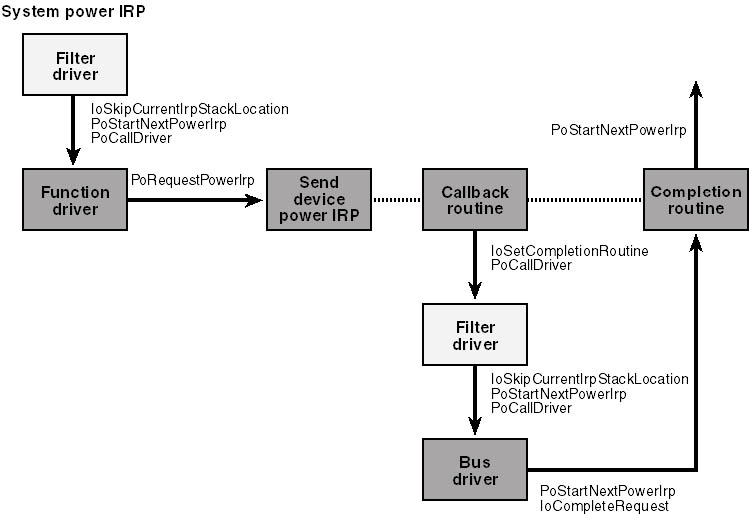
Figure 8-7. IRP flow when decreasing system power.
Figure 8-8 diagrams how our finite state machine handles this type of IRP. TriageNewIrp puts
the state machine into the SubPowerDownPending state and jumps to the SelectDState
action. You already saw that SelectDState selects a device power state and leads to a
SendDeviceIrp action to request a device power IRP. In the system power-down scenario,
we'll be specifying a lower power state in this device IRP.
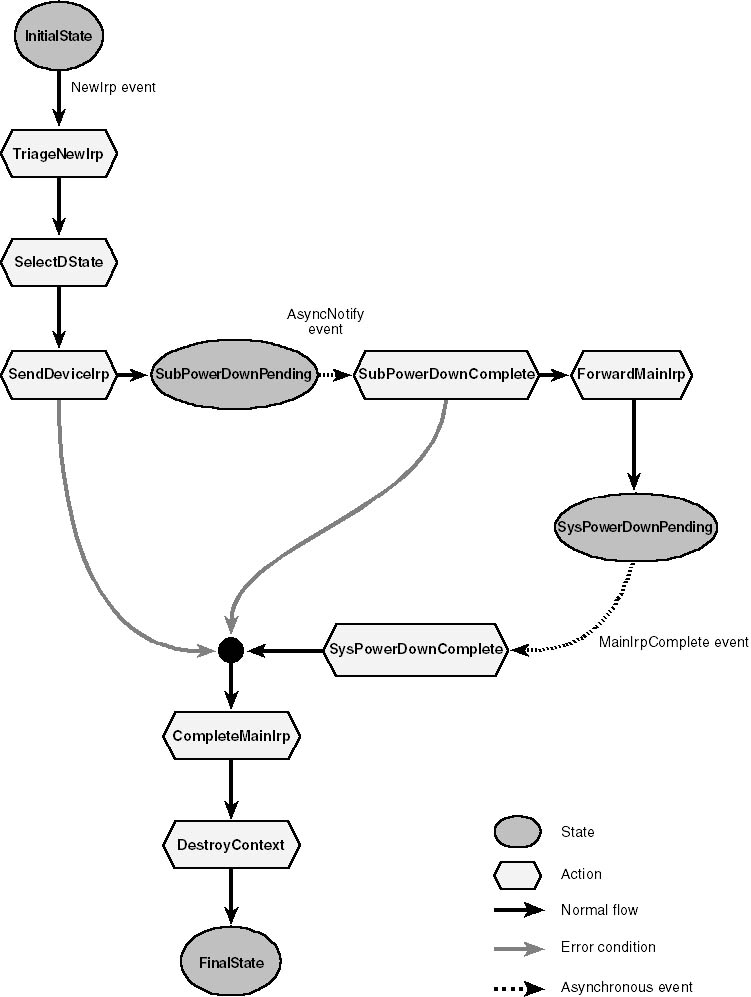
Figure 8-8. State transitions when decreasing system power.
When the device IRP finishes, we execute SubPowerDownComplete:
case SubPowerDownComplete:
{
if (status == -1)
status = STATUS_SUCCESS;
if (NT_SUCCESS(ctx->status))
{
ctx->state = SysPowerDownPending;
action = ForwardMainIrp;
}
else
action = CompleteMainIrp;
continue;
}
|
As you can see, if the device IRP fails, we fail the system IRP too. If the device IRP
succeeds, we enter the SysPowerDownPending state and exit via ForwardMainIrp. When the
system IRP finishes, and MainCompletionRoutine runs, we'll execute
SysPowerDownComplete:
case SysPowerDownComplete:
{
if (stack->MinorFunction == IRP_MN_SET_POWER)
pdx->syspower = stack->Parameters.Power.State.SystemState;
action = CompleteMainIrp;
continue;
}
|
The only purpose of this action is to record the new system power state in our device
extension and then to exit via CompleteMainIrp and DestroyContext.
Device Power IRPs
All we actually do with system power IRPs is act as a conduit for them and request a device
IRP either as the system IRP travels down the driver stack or as it travels back up. We have
more work to do with device power IRPs, however.
To begin with, we don't want our device occupied by any substantive I/O operations while
a change in the device power state is under way. As early as we can in a sequence that leads to
powering down our device, therefore, we wait for any outstanding operation to finish, and we
stop processing new operations. Since we're not allowed to block the system thread in which
we receive power IRPs, an asynchronous mechanism is required. Once the current IRP finishes,
we'll continue processing the device IRP.
If the device power IRP implies an increase in the device power level, we'll forward it
to the next lower driver. Refer to Figure 8-9 for an illustration of how the IRP flows through
the system. The bus driver will process a device set-power IRP by, for example, using whatever
bus-specific mechanism is appropriate to turn on the flow of electrons to your device, and it
will complete the IRP. Your completion routine will initiate whatever operations are required
to restore context information to the device, and it will return
STATUS_MORE_PROCESSING_REQUIRED to interrupt the completion process for the device IRP. When
the context restore operation finishes, you'll resume processing substantive IRPs and
finish completing the device IRP.
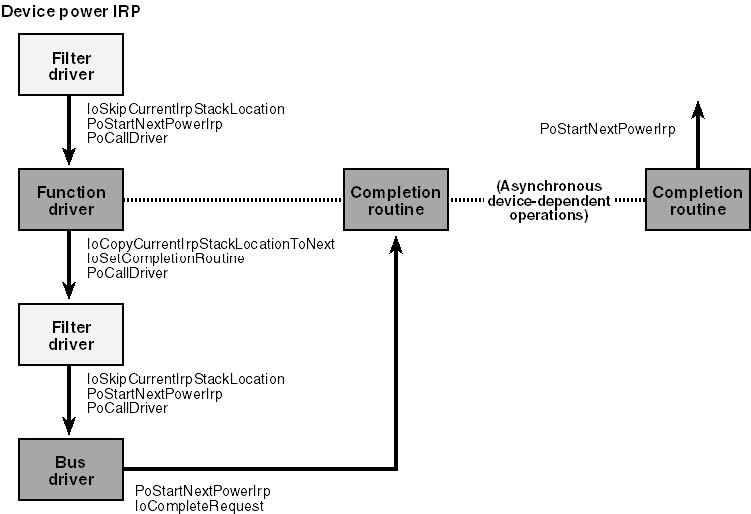
Figure 8-9. IRP flow when increasing device power.
If the device power IRP implies no change or a reduction in the device power level, you
perform any device-specific processing (asynchronously, as we've discussed) and then
forward the device IRP to the next lower driver. See Figure 8-10. The "device-specific
processing" for a set operation includes saving device context information, if any, in
memory so that you can restore it later. There probably isn't any device-specific
processing for a query operation beyond deciding whether to succeed or fail the query. The bus
driver completes the request. In the case of a query operation, you can expect the bus driver
to complete the request with STATUS_SUCCESS to indicate acquiescence in the proposed power
change. In the case of a set operation, you can expect the bus driver to take whatever
bus-dependent steps are required to put your device into the specified device power state. Your
completion routine cleans up by calling PoStartNextPowerIrp, among other things.
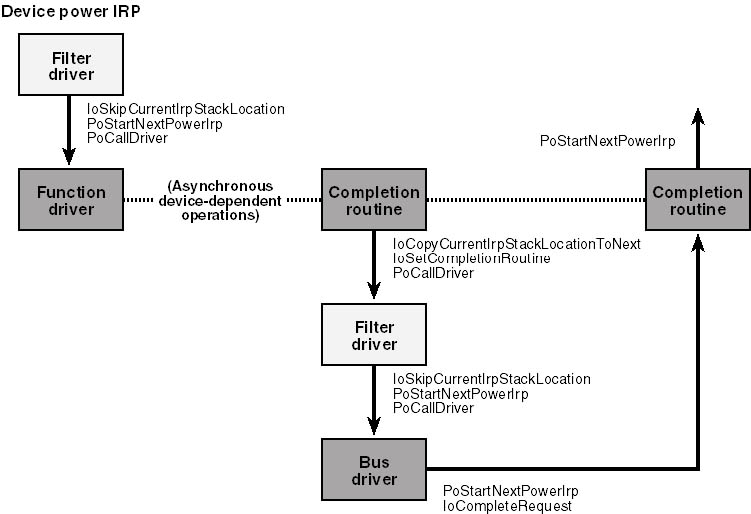
Figure 8-10. IRP flow when decreasing device power.
I invented StallRequestsAndNotify for use in TriageNewIrp. (It's so new that
Chapter 6, where all the other DEVQUEUE functions are described, was already beyond my reach
when I created it.) The first step it performs is to stall the request queue. If the device is
currently busy, it records a callback routine address—in this case,
GenericSaveRestoreComplete, which I'm overloading for purposes of receiving a
notification—and returns STATUS_PENDING. TriageNewIrp will then exit in the
QueueStallPending state.
If the device isn't busy, StallRequestsAndNotify returns STATUS_SUCCESS without
arranging any callback; the device can't become busy now because the queue is stalled.
TriageNewIrp will then go directly to the QueueStallComplete action.
We reach the QueueStallComplete routine either directly from TriageNewIrp (when the device
is idle or if the queue was previously stalled for some other power-related reason) or when the
client driver calls StartNextPacket to indicate that it's finished processing the
current IRP. StartNextPacket calls the notification routine we gave to StallRequestsAndNotify,
and that routine signals an AsyncNotify event to the state machine. QueueStallComplete now
separates the device IRP into one of four categories, as follows:
case QueueStallComplete:
{
if (stack->MinorFunction == IRP_MN_SET_POWER)
{
if (stack->Parameters.Power.State.DeviceState < pdx->devpower)
{
action = ForwardMainIrp;
SETSTATE(DevPowerUpPending);
}
else
action = SaveContext;
}
else
{
if (stack->Parameters.Power.State.DeviceState < pdx->devpower)
{
action = ForwardMainIrp;
SETSTATE(DevQueryUpPending);
}
else
action = DevQueryDown;
}
continue;
}
|
The upshot of QueueStallComplete is that we perform the next action indicated in Table 8-5
for the type of IRP we're dealing with.
Table 8-5. Next action for device IRPs.
| Minor Function |
More or Less Power? |
Next Action |
| IRP_MN_QUERY_POWER |
More power
Less or same power |
ForwardMainIrp
DevQueryDown |
| IRP_MN_SET_POWER |
More power
Less or same power |
ForwardMainIrp
SaveContext |
Setting a Higher Device Power State
Figure 8-11 diagrams the state transitions that occur for an IRP_MN_SET_POWER that specifies
a higher device power state than that which is current.
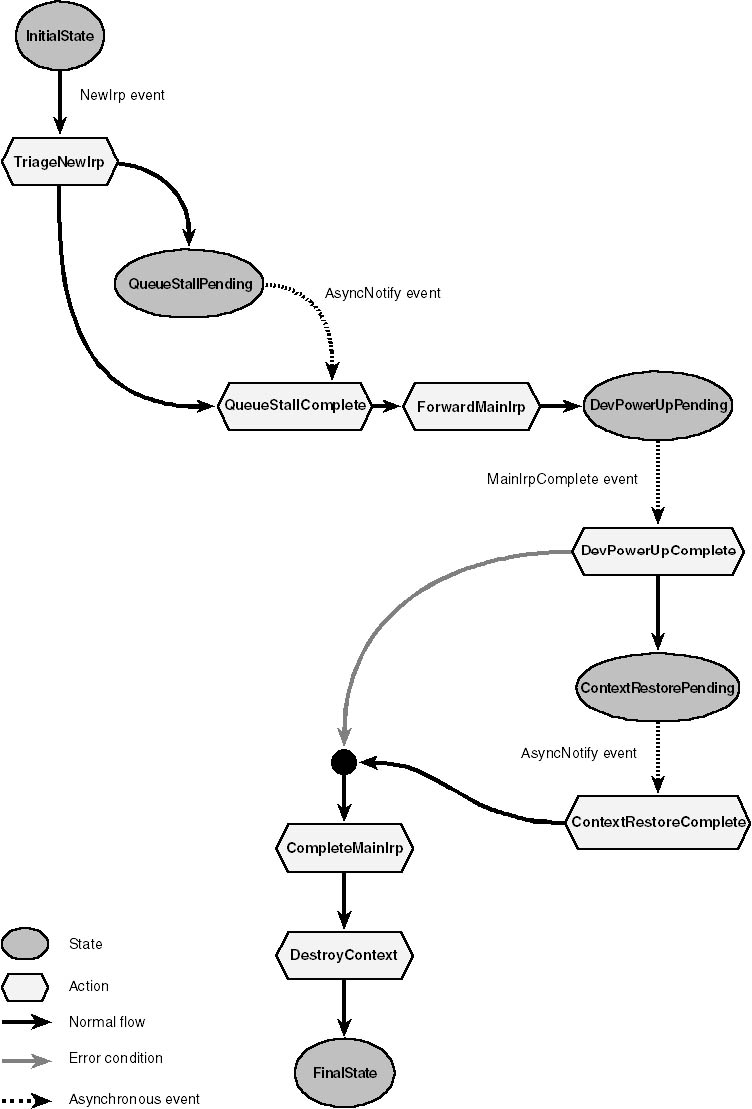
Figure 8-11. State transitions when setting a higher device power state.
ForwardMainIrp will install a completion routine and send the IRP down the driver stack.
When MainCompletionRoutine eventually gains control, it signals a MainIrpComplete event.
We will be in the DevPowerUpPending state, so we'll execute the
DevPowerUpComplete action:
case DevPowerUpComplete:
{
if (!NT_SUCCESS(ctx->status) || stack->MinorFunction !=
IRP_MN_SET_POWER)
{
action = CompleteMainIrp;
continue;
}
status = STATUS_MORE_PROCESSING_REQUIRED;
DEVICE_POWER_STATE oldpower = pdx->devpower;
pdx->devpower = stack->Parameters.Power.State.DeviceState;
if (pdx->RestoreContext)
{
ctx->state = ContextRestorePending;
(*pdx->RestoreDeviceContext)(pdx->DeviceObject, oldpower,
pdx->devpower, ctx);
break;
}
action = ContextRestoreComplete;
continue;
}
|
The main task we need to accomplish is restoring any device context that was lost during the
previous power-down transition. Since we're not allowed to block our thread, we initiate
whatever operations are required and return STATUS_MORE_PROCESSING_REQUIRED to interrupt the
completion of the device IRP. When the restore operations finish, the client driver calls
GenericSaveRestoreComplete, which signals an AsyncNotify event. We'll be in the
ContextRestorePending state at that point, so we'll perform the
ContextRestoreComplete action:
case ContextRestoreComplete:
{
if (event == AsyncNotify)
status = STATUS_SUCCESS;
action = CompleteMainIrp;
if (!NT_SUCCESS(ctx->status) || pdx->devpower != PowerDeviceD0)
continue;
ctx->UnstallQueue = TRUE;
continue;
}
|
The main result of this action routine is that we unstall the queue of substantive IRPs at
the conclusion of an IRP_MN_SET_POWER to the D0 state. We exit via CompleteMainIrp and
DestroyContext.
Querying for a Higher Device Power State
You shouldn't expect to receive an IRP_MN_QUERY_POWER that refers to a higher power
state than your device is already in, but you shouldn't crash the system if you happen to
receive one. The following code shows what GENERIC does when such a query completes in the
lower level drivers. (Refer to Figure 8-12 for a state diagram.)
case DevQueryUpComplete:
{
if (NT_SUCCESS(ctx->status) && pdx->QueryPower)
if (!(*pdx->QueryPower)(pdx->DeviceObject, pdx->devpower,
stack->Parameters.Power.State.DeviceState))
ctx->status = STATUS_UNSUCCESSFUL;
action = CompleteMainIrp;
continue;
}
|
That is, GENERIC allows the client driver to accept or veto the query by calling its
QueryPower function, and then it exits via CompleteMainIrp and DestroyContext.
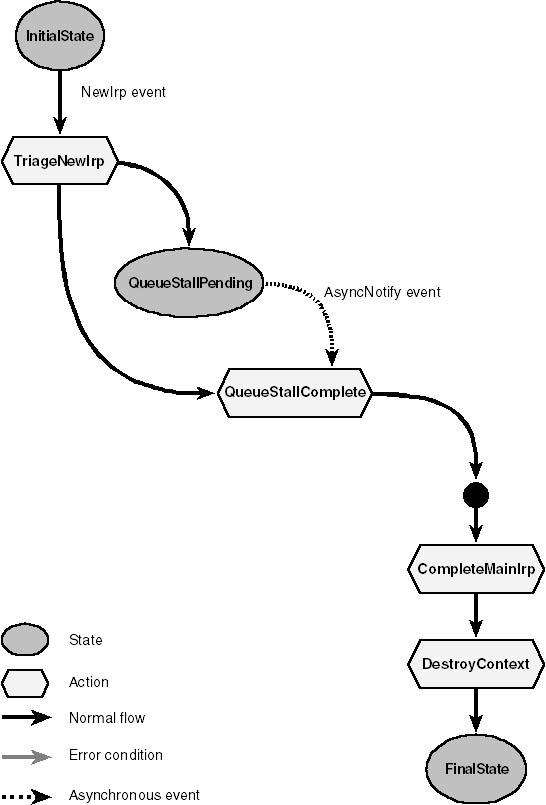
Figure 8-12. State transitions for a query about a higher device power state.
Setting a Lower Device Power State
If the IRP is an IRP_MN_SET_POWER for the same or a lower device power state than current,
the finite state machine goes through the state transitions diagrammed in Figure 8-13.
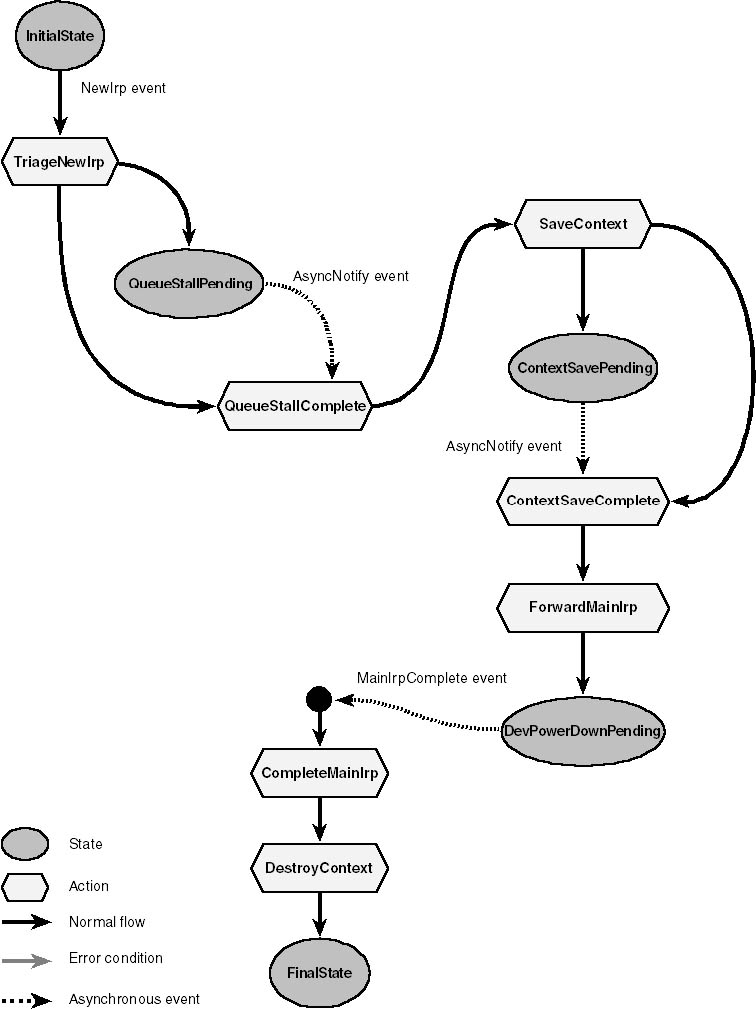
Figure 8-13. State transitions when setting a lower device power state.
SaveContext will initiate an asynchronous process to save any device context that
will be lost when the device loses power:
case SaveContext:
{
DEVICE_POWER_STATE devpower =
stack->Parameters.Power.State.DeviceState;
if (pdx->SaveDeviceContext && devpower > pdx->devpower)
{
ctx->state = ContextSavePending;
(*pdx->SaveDeviceContext)(pdx->DeviceObject, pdx->devpower,
devpower, ctx);
break;
}
action = ContextSaveComplete;
}
|
When the save operations finish, the client driver calls GenericSaveRestoreComplete, which
signals an AsyncNotify event. We'll be in the ContextSavePending state at that
point, so we'll perform the ContextSaveComplete action:
1  2
2  3
3  4
4 
|
case ContextSaveComplete:
{
if (event == AsyncNotify)
status = STATUS_SUCCESS;
ctx->state = DevPowerDownPending;
action = ForwardMainIrp;
DEVICE_POWER_STATE devpower =
stack->Parameters.Power.State.DeviceState;
if (devpower <= pdx->devpower)
continue;
pdx->devpower = devpower;
if (devpower > PowerDeviceD0)
ctx->UnstallQueue = FALSE;
continue;
}
|
- We'll come directly here from GenericSaveRestoreComplete, and we need
to change status to prevent an ASSERT failure (but not for any other reason).
- If we didn't actually change power, there's no more work to do here.
- This is where we record the new device power state when we're powering
down.
- If the device is now in a low-power or no-power state, we want to leave the
substantive IRP queue stalled.
The next action, ForwardMainIrp, sends the device IRP down the driver stack. The bus driver
will turn the physical flow of current off and complete the IRP. We'll see it next when
MainCompletionRoutine signals a MainIrpComplete event, which takes us directly to
CompleteMainIrp and thence to DestroyContext.
Querying for a Lower Device Power State
An IRP_MN_QUERY_POWER that specifies the same or a lower device power state than current is
the basic vehicle by which a function driver gets to vote on changes in power levels. Although
the DDK doesn't specifically say you should create one of these requests when you handle a
system query, it's a good idea to do so. You have to handle device queries anyway and might
as well put all the query logic in one place. Figure 8-14 shows how our state machine will
handle such a query.
The DevQueryDown action follows QueueStallComplete for this kind of IRP:
case DevQueryDown:
{
DEVICE_POWER_STATE devpower =
stack->Parameters.Power.State.DeviceState;
if (devpower > pdx->devpower
&& pdx->QueryPower
&& !(*pdx->QueryPower)(pdx->DeviceObject,
pdx->devpower, devpower))
{
ctx->status = STATUS_UNSUCCESSFUL;
action = DevQueryDownComplete;
continue;
}
ctx->state = DevQueryDownPending);
action = ForwardMainIrp;
continue;
}
|
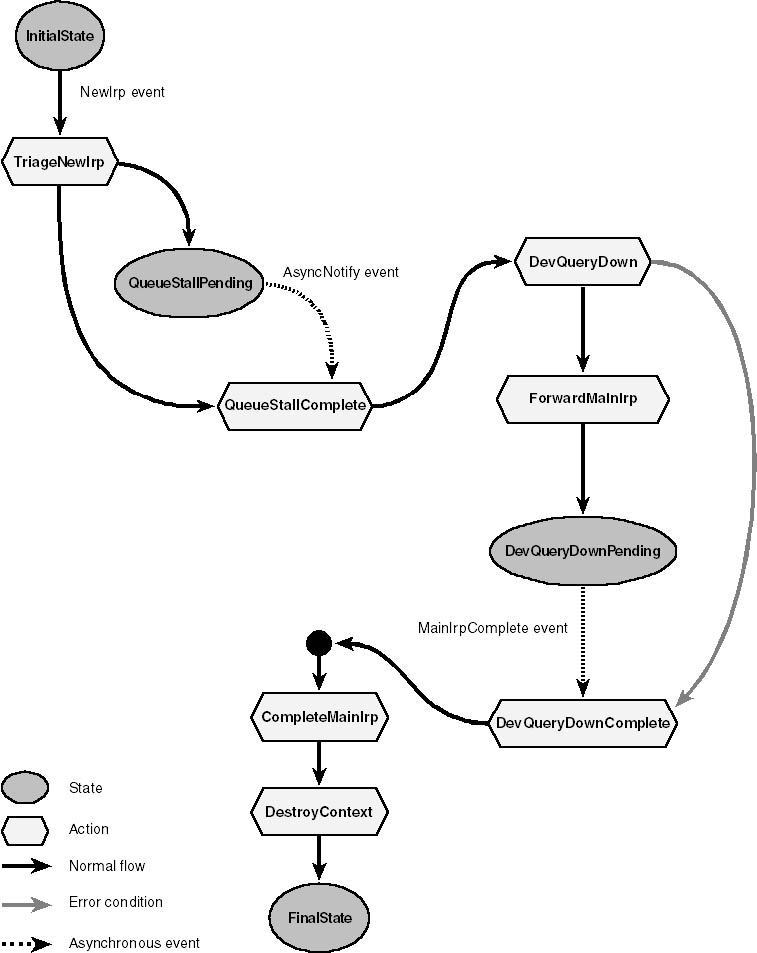
Figure 8-14. State transitions for a query about a lower device power state.
GENERIC basically lets the client driver decide whether the query should succeed. If the
client driver says "Yes," we enter the DevQueryDownPending state and exit via
ForwardMainIrp to send the query down the driver stack. Completion of the IRP sends us to the
DevQueryDownComplete action:
case DevQueryDownComplete:
{
if (NT_SUCCESS(ctx->status))
ctx->UnstallQueue = FALSE;
action = CompleteMainIrp;
continue;
}
|
The basic action we take is to leave the substantive IRP queue stalled if the query
succeeds. (CompleteMainIrp will unstall the queue if it sees the UnstallQueue flag set
in the context structure. Clearing the flag causes this step to be skipped.) Recall that we
first stalled the queue when we received the query. We'll leave it stalled until someone
eventually sends us a set-power IRP to put the device into D0.
2
